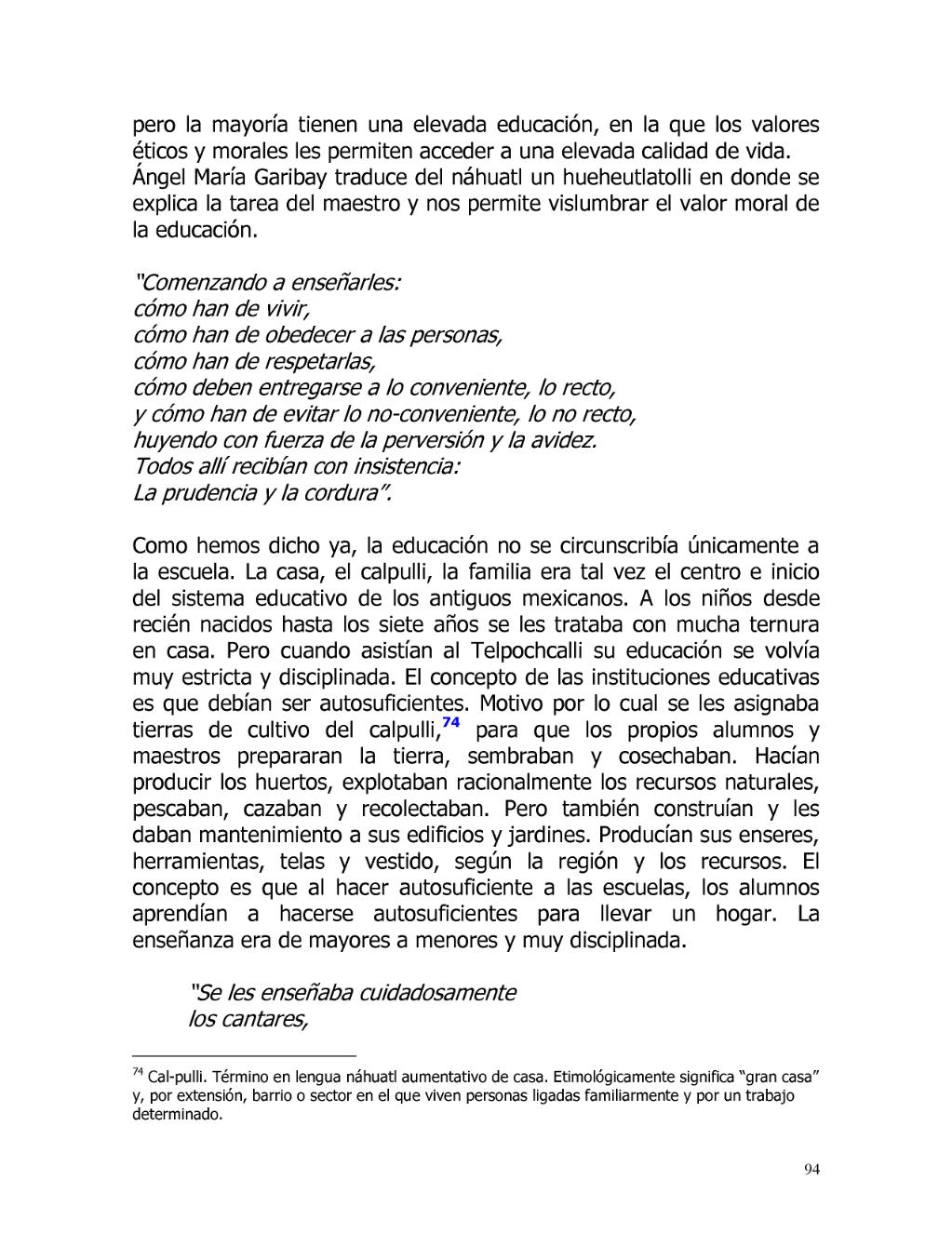but most have an elevated education, in which the ethical and moral values allow access to a high quality of life. Ángel María Garibay K. translated from Nahuatl a Huehuetlahtolli where the task of the teacher is explained and allows a glimpse of the moral value of education.
"Beginning to teach them:
how they shall live,
how they shall obey people,
how to respect them,
how they shall surrender to the appropriate, the right,
and how to avoid the non—convenient, not right,
strongly fleeing from evil and greed.
Everyone there strongly received:
prudence and wisdom".
As it has already been noted, education was not limited to the school. The House, the calpulli, the family were perhaps the center and beginning of the educational system of the ancient Mexican. Children from birth to the age of seven were tenderly cared for at homes. But when they attended the Telpochcalli their education became very strict and disciplined. The concept of educational institutions was that they should be self-sufficient. Reason why they were assigned farmlands for the calpulli,[1] so that the students and teachers prepared the land, planted and harvested. They made their land produce, exploited natural resources rationally, fished, hunted and gathered. But they also built and maintained their buildings and gardens. They produced their belongings, tools, textiles and clothing, according to the region and the resources. The concept was that in making self-sufficient schools, pupils learned to be self-sufficient at home. Education went from older to younger and very disciplined.
"They were carefully taught
the songs,
____________________
- ↑ In pre-Columbian Aztec society a Calpulli (from the Nahuatl [kaɬˈpoːlli], meaning "large house") was the designation of an organizational unit below the level of the Alphabet "citystate". A Nahua city state was divided into a number of calpullis that each constituted a unit where the calpulli inhabitants were collectively responsible for different organizational and religious tasks in relation to the larger altépetl. Calpullis controlled land which was available for calpulli members to cultivate and also operated the Telpochcalli schools for young women of commoner descent. In Aztec culture, as in most other civilizations, the family unit was very important. There were several levels of organization in Aztec family life beginning with the base family unit
This page was originally published in Spanish, and is translated by Wikisource editors. It does not use the proofread page system traditionally; it is used to verify translation. Proofreading and validation must be done by editors who are fluent in both the original and the translated language. Follow the interwiki link under In other languages to view this page in Spanish. |
